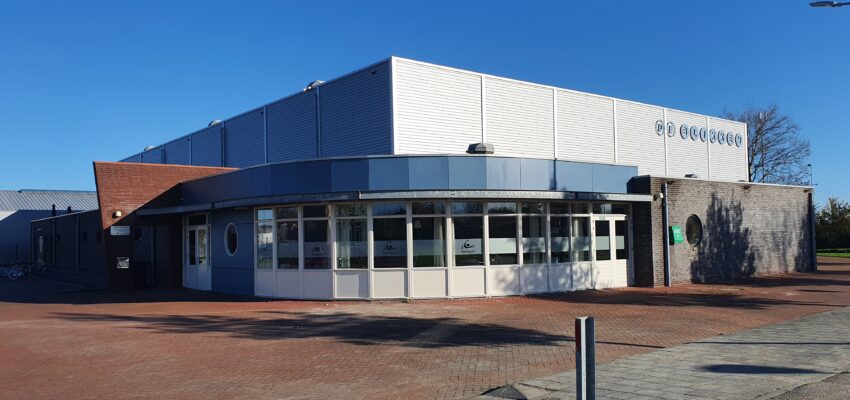In 2016, the Dutch government decided that an important part of the energy transition must be implemented in the built environment by disconnecting houses and community buildings from the gas grid in the next 3 decades. To realise this, a gigantic conversion of our heating infrastructure is needed at a high pace.
In Middelburg we want to tackle this challenge by exploring and demonstrating our options to go gas-free in practical trials. The maintenance and refurbishment of our municipal buildings is an opportunity to take steps towards this gas-free future, reducing CO2 emissions and demonstrating solutions at the same time.
The pilot building is De Blikken, a community and sports centre in Arnemuiden, a fishery village near Middelburg with about 5500 residents. In this village, De Blikken plays an important role with respect to organizing health activities and providing home for meeting and socializing. Area of the building is about 1800 m2 and fairly good thermal insulation matches building regulations in 2004, the year of construction. However, considerable part of the building’s heat loss is induced by ventilation, also leading to discomfort for people using the facility.
Energy savings and renewable share can be enhanced by applying led lighting systems and installing solar panels, hence, as part of a no regret approach. Improvement of De Blikken not only promotes energy savings and renewable energy to the residents and business owners of Arnemuiden, it also sets a great example for upgrading a vast number of this type of facilities throughout the country to a fossil free and more pleasant use.
This pilot will deliver De Blikken as a 100% gas-free building (reduction of 13.700m3 gas/year) Heat recovery from ventilation air and LED lighting makes it possible to further reduce the CO2 emissions. The remaining required electricity, depending on the implemented solution, will be locally generated with solar panels. Herewith, the building becomes CO2 and energy neutral. De Blikken, we will also generate electricity for the outside/surrounding area e.g. lighting.This leads to a reduction in CO2 emissions of 74 ton CO2/year.


